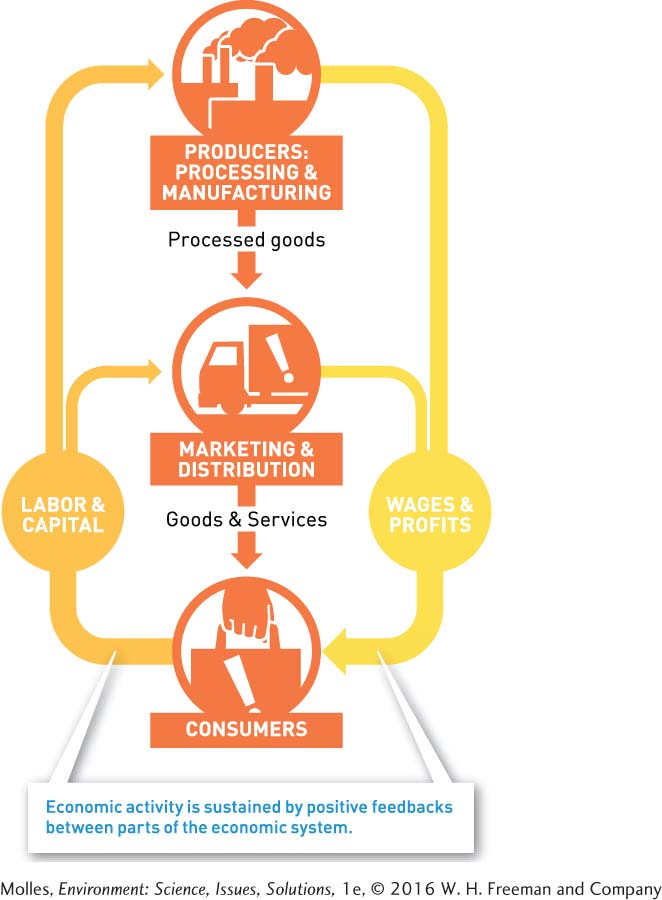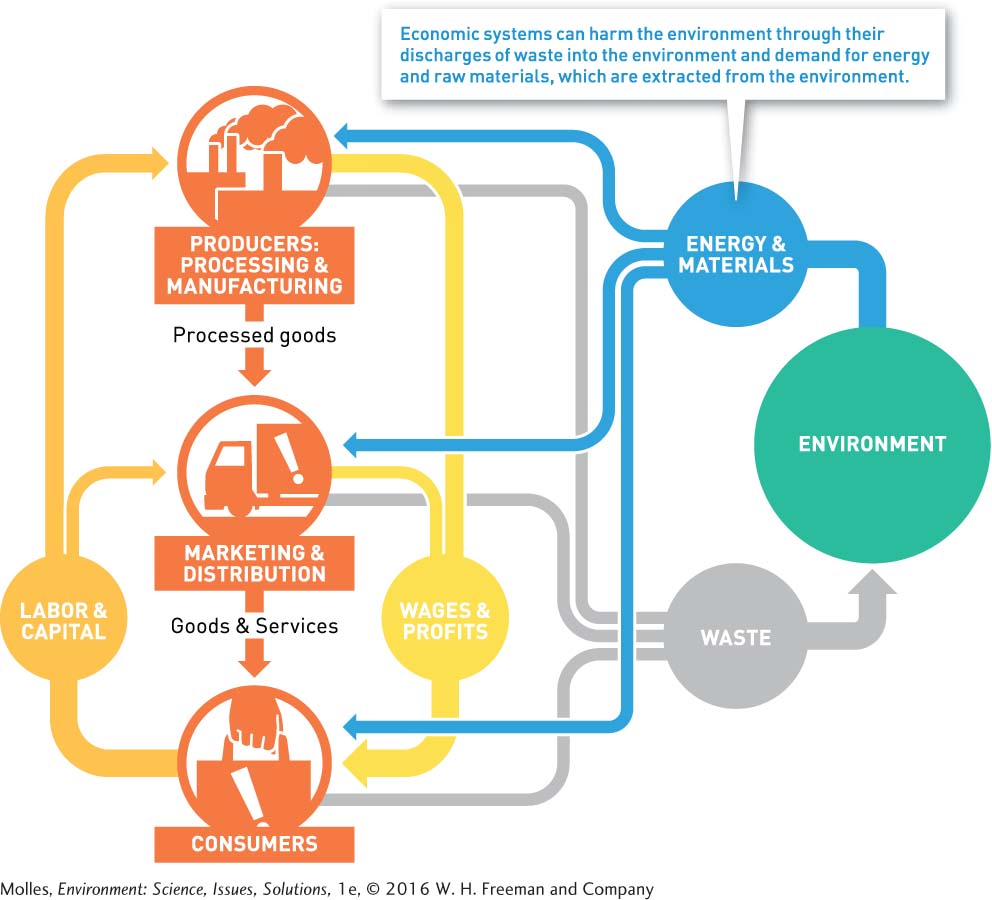2.6 How we represent economic systems can have environmental consequences
When the human population was small and our technology simple, our environmental impact was negligible and there was little need to consider how we might be affecting Earth at anything but the most local scale. But with an ever-
Traditional Closed Economic Model
positive feedback A stimulus in which an increase in some factor in a system, such as an economic system or ecosystem, produces additional increases in that factor within the system or in which a decrease in a factor causes additional decreases.
Western economists historically modeled an economy as a closed system. In such a model, processing and manufacturing industries produce goods that are marketed and distributed to consumers. When consumer spending on goods and services (demand) rises, this stimulates the processing and manufacturing industries to meet the new demand by making more goods. The industry may have to hire new employees to help produce the goods and meet the demand. People who are employed and make money spend money in the economy, so as industry grows to meet demand, employment rates go up, spending goes up, and demand continues to go up. The system is spurred on continuously. This is an example of positive feedback in a system, when an increase in some factor produces additional increases in that factor within the system (Figure 2.19).

A closed economic system leaves out several important elements: It ignores anything that, in real life, comes from outside the system itself—
Open Economic Model
In the real world, economic systems are not closed but open, since they cannot function without inputs of materials and energy. In a model that considers the environment, raw materials such as oil, metal ores, and agricultural crops must come from somewhere. These materials are then processed by the economic system to produce goods or services that are distributed and marketed to consumers using energy sources such as fossil fuels. Along the way, each of these economic processes will result in waste energy and waste materials that impact the environment (Figure 2.20).

48
economic externality A cost or benefit to the environment or to society resulting from the production and use of a product that is not included in the market price of the product.
market failure A situation in which free markets do not allocate goods and services efficiently, such as when the price of a product does not include its environmental impact.
49
In this type of open system model, the environment is considered to be outside or “external” to the economic system. The environmental impacts that may occur as a consequence of economic activity, such as the dumping of waste into a river or the spewing of gases into the atmosphere, are expected to have little impact on prices of products. That’s because historically, companies did not have to pay for causing such damage; those costs were instead borne by society at large. An economic externality is therefore a cost or benefit to the environment or to society that is not included in the market price of the product. As we shall see in the next section, economic externalities can contribute to a market failure, a situation in which society is harmed because of the inefficiency in how goods and services are distributed.
Think About It
How might a closed model of an economic system be useful despite its not being realistic?
Under what circumstances would it be reasonable to not include the impact of economic activity on the environment in calculating the cost of goods and services produced?